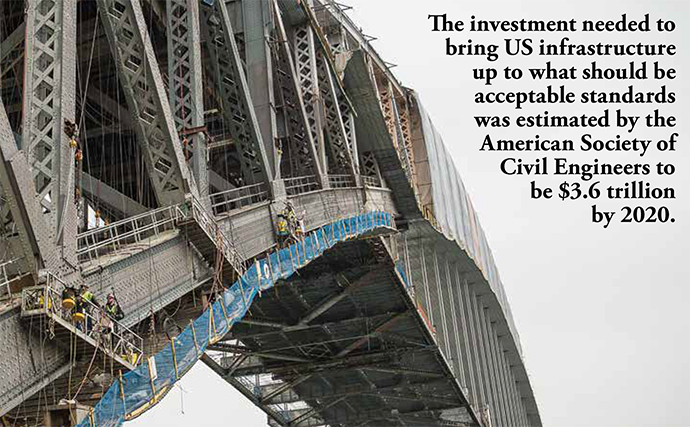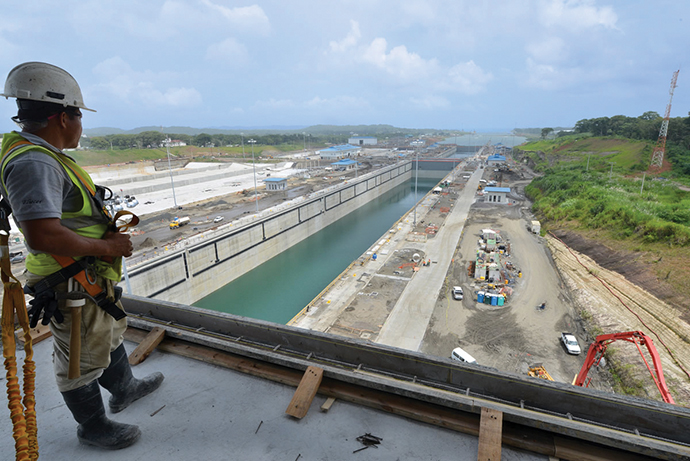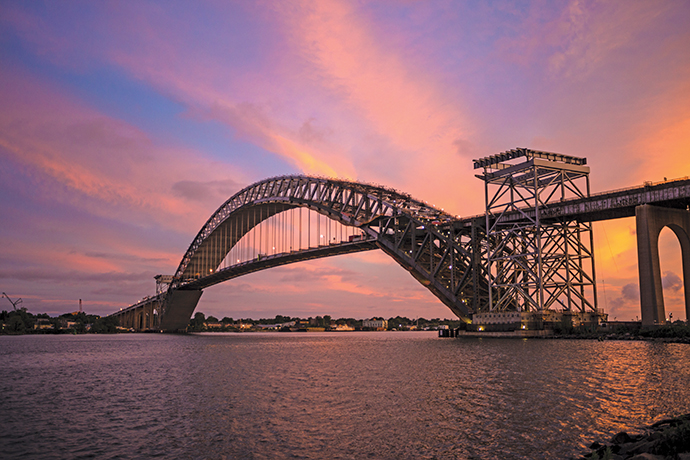Infrastructure is on the minds of most world leaders, and some of the world’s thought leaders. Among several recent books on the topic, the biggest splash has come from technology historian and engineer Henry Petroski in The Road Taken: The History and Future of America’s Infrastructure. Here, in an exclusive contribution, the Duke University professor, BBC/PBS presenter and author of such books as The Pencil and To Engineer Is Human offers his unique perspective on where the roads, rivers, railroads, ports, airports and networks in the US are taking us, funding obstacles ahead, and the implications for corporate location decision-makers and policymakers.
Adequate infrastructure has always been a very important factor in making a city and its environs attractive and hospitable to business interests. And the absence of key infrastructure can leave a city at the mercy of competitors.
In the mid-nineteenth century, St. Louis was in danger of losing out to Chicago as a gateway to the West because it did not have a railroad bridge across the Mississippi River. And Brooklyn might have remained a city distinct from New York much longer than it did had the Brooklyn Bridge not provided a reliable link between them.
In the early twentieth century, San Francisco Bay was becoming choked with ferry boat traffic, placing a physical limit on growth. It was only the construction of the Golden Gate and San Francisco–Oakland Bay bridges in the 1930s, and the Interstate highway system that followed decades later, that opened up the enormous potential of that area, including Silicon Valley and the Port of Oakland, which has become a key West Coast port for transpacific container shipping.
But bridges, which can serve as metaphors for infrastructure generally, can also be hindrances to retaining old and attracting new business to an area. The Ambassador Bridge between Detroit and Windsor, Ontario, being North America’s busiest international border crossing, is also a well-known bottleneck. Debates and lawsuits over building alternate routes have complicated site selection in the area.

On the East Coast, the 85-year-old Bayonne Bridge, whose steel arch arcs across a narrow reach into the container shipping hub in Newark Bay, has too low a clearance to allow passage of the larger and taller ships now able to transit through the recently expanded Panama Canal. The technically unprecedented and expensive project of raising the bridge’s roadway is underway, as are port and harbor deepening projects up and down the East Coast to make them hospitable to receiving the gigantic new ships and their cargo.
A similar situation exists at the entrance to Tampa Bay, where the Sunshine Skyway Bridge blocks the way to ever taller container and cruise ships. Countless cities are faced with multibillion-dollar infrastructure projects to remove such obstacles to attracting business and trade.
Not So FAST
Other countries have long recognized that obsolete infrastructure poses a real obstacle to attracting and retaining business and trade to their cities and regions. Airports can obviously play at least as important a role as seaports in making site selection decisions. New York City’s LaGuardia Airport — gateway to the glamor of Wall Street, Broadway, and Fifth Avenue — has been described as America’s worst. It is finally undergoing a multibillion-dollar upgrade, but it will take more than just money to regain a reputation for making a strong first impression on business and trade interests. Major cities abroad have long recognized the value of a modern airport, and recently emergent countries such as the United Arab Emirates have had the advantage of being able to build spectacular facilities virtually from scratch.
But airports and seaports do not exist as islands unto themselves. They are all but useless if they are not connected to the rest of their home country by a network of more than adequate roads and super-roads. The US Interstate Highway System celebrates its sixtieth anniversary this year, and it is showing its age. The American Society of Civil Engineers (ASCE), which issues quadrennial report cards on the condition of the nation’s infrastructure, most recently has given America’s roads a D grade and its bridges an only slightly better grade of C+. Neither of these grades (signifying an evaluation of poor to mediocre), combined with the inadequate funding to raise the grades to acceptable levels, augurs well for the future attractiveness of the United States, let alone many of its cities and regions, for business and industry.
Among the reasons the nation’s highway infrastructure has fallen behind is that the federal Highway Trust Fund, which is fed primarily by revenue from the federal gasoline tax of 18.4 cents per gallon, has not been keeping up the times and with needs. The tax has not been raised since 1993, and although inflation has been relatively low, it has not been zero in the interim. Furthermore, the federal government has been promoting fuel-efficient, hybrid, and all-electric vehicles, which collectively use less if any gasoline at all, thereby resulting in a more or less flat revenue stream into the fund that through grants to states and municipalities has in recent times paid about 25 percent of the cost of constructing, upgrading and maintaining roads and bridges.
In spite of these realities, recent legislation passed in Washington has done little to correct the imbalance — even after the overall $48 billion for transportation projects from the 2009 federal Recovery Act. The Fixing America’s Surface Transportation (FAST) Act passed with much fanfare in late 2015 did not raise the gas tax and has not guaranteed a funding stream for the duration of the five-year legislation. In the meantime, individual states and municipalities have been left with the problem of how to bring their highway infrastructure up to or maintain it at a level sufficiently adequate to retain and attract business and industry. There has been talk of doing away with the federal gas tax entirely, leaving it to the states to impose the necessary taxes on fuel to keep their own highway trust funds in solvency. However, in many cases state fuel taxes already exceed the federal level, making further increases unpalatable to politicians, especially when seeking reelection.
While Grades Remain Low, the Cost Only Rises
The ASCE’s infrastructure report cards grade considerably more than roads and bridges. Among other categories receiving D grades on the most recent (2013) cards are mass transit, aviation, water resources, schools, inland waterways, and the energy grid — the condition of all of which should naturally be considered in a wise site selection process.
Overall, the nation’s average grade was calculated to be a D+, and the investment needed to bring the infrastructure up to what should be acceptable standards was estimated to be $3.6 trillion by 2020. In a 2016 study, ASCE has estimated that “continued underinvestment in infrastructure will cost each U.S. family $3,400 a year over the next decade.” Without corrective action, such amounts can be expected to rise again in the new report card that will likely be issued early in 2017, just as a new administration will be taking over in Washington.

In addition to the national report cards issued by ASCE, separate reports are issued by many of the engineering society’s state and regional sections. As can be expected, these vary from section to section and, like the grades assigned by different instructors in the same college course, can reflect different standards. Nevertheless, the narrative parts of these report cards can be helpful to site selection teams in pointing out what to look out for in evaluating a particular city or region. While the grades provide a gross evaluation in the various categories, what goes into reaching the individual grades can include a consideration not only of the condition of roads and bridges, but also an assessment of the capacity of highways for existing traffic and for projected growth in an area, information that could be among the most valuable.
— David Egan, head of Industrial & Logistics Research, The Americas, for CBRE Group
Lastly, while the ASCE report cards assign a grade to public parks and recreation, which refer to outdoor activities, there are many other leisure time activities that might be appropriate to consider in a site selection process, such as museums, performance venues, the restaurant scene, and proximity to academic institutions and the cultural events associated with them. Such amenities may be termed cultural infrastructure, and to many workers they can be as important as whether the road to them is smoothly paved or full of potholes.
The site selection challenge obviously has many facets, and not all of them fall within the traditional definition of infrastructure.

Henry Petroski is the Aleksandar S. Vesic Professor of Civil Engineering and a professor of history at Duke. His most recently published book is The Road Taken: The History and Future of America’s Infrastructure.
